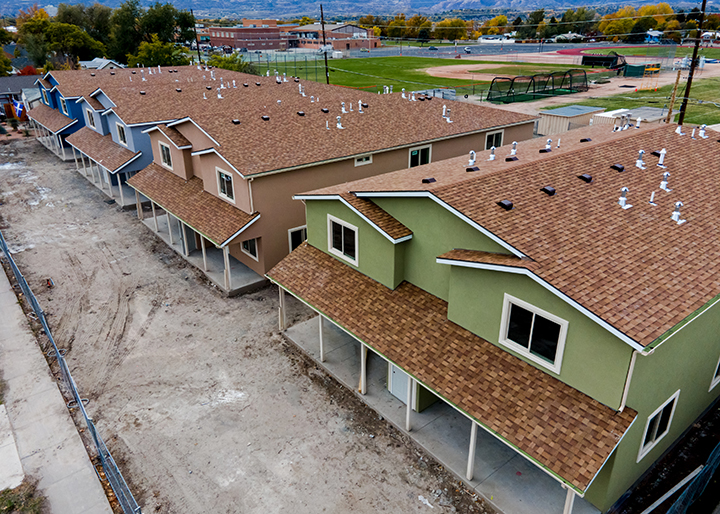Affordable Housing

Better Affordable Housing Options Improve Quality of Life
By John Beacham
Inflation, rising interest rates and soaring housing prices—with demand for property widely outstripping supply—continue to endure as features of America’s post-pandemic recovery. While each trend is likely to normalize over time, families and communities today are desperate for reasonable housing options that serve low- and middle-income earners.
Particularly as population concentration continues to shift and become more urbanized, the spotlight on the ongoing struggle surrounding access to affordable housing burns brighter.
This need represents a massive opportunity for development and investment, yet it has proven an extremely challenging one to realize, with traditional banks and agencies often not structured to effectively address this segment in a timely manner—or only able to do so narrowly. Indeed, affordable housing has passed through waves of fits and starts, new theories and models, and creeping restrictions and regulations over many decades. But often the result is the same: projects take too long to get built, politics win over reason, financing is unavailable or unreliable. As a result, far too little inventory is created.
This is where private investment comes in — filling the gap and helping to push through the inertia that keeps these projects from becoming reality. With the right expertise and partners, private capital can play a central role in bridging this gap, building the relationships and momentum required to solve the critical shortage of affordable housing.
Required Foundation
Affordable housing is empowering. It provides families with stability, creates ready access to economic opportunity, is a proven onramp to home ownership, and helps diversify and enrich communities and workforces alike. In many ways, it is the foundation for a better life and much of America’s social fabric. What we love about our cities and towns today is owed to the availability of affordable places to live in earlier eras.
Today, there simply is not enough of it.
Despite steady population growth, the National Association of Realtors reports that new housing construction in the U.S. over the past 20 years fell 5.5 million units below historical levels. Within that shortfall, 2 million are single family homes, 1.1 million are units in buildings of two to four units, and 2.4 million are in buildings with at least five units. Between 2010 and 2020, new home construction fell 6.8 million units short of what is needed to meet household formation growth with normal reductions to housing inventory.
Affordable housing supply has been hit especially hard by these wrong-way trends. Today, for every 100 low-income households, there are only 37 affordable and available rental homes, and these numbers are even more pronounced in densely populated cities and states. As a result, many families pay half or more of their income in rent, and some cannot afford to stay in their own homes. There is a pressing need for updates to outdated housing stock; conversions of industrial, commercial office and retail properties into residential units; conversions of single-family properties into multifamily properties; and construction of multifamily buildings from the ground up.
A Virtuous Cycle
In many cases, there is sufficient local enthusiasm and space available to meet this need, but navigating these projects is no easy task. Successful affordable housing delivery requires good timing, on-the-ground knowledge of the market, and financing for local borrowers who have the networks of builders, entrepreneurs, civic leaders and other community stakeholders to get these projects over the finish line.
This is happening today across two important dimensions. The first is offering residential bridge lending that is flexible and put in local hands quickly to buy, fix up and make available newly renovated stock when it is most needed. One of the primary issues faced in affordable housing is the unpredictability of process, both in approvals and the building or renovation of property. Private capital can be more nimble, quick, and strategic, bringing needed resources and perspective, and readjusting along the way.
A second but equally crucial element is the creation of a virtuous financing cycle that more consistently solves for the issue of newly available housing volume. An attractive market has developed for private capital providers to purchase residential bridge loans after the capital has been deployed and affordable housing projects are complete. This frees up credit at the local level, allowing for greater turnover in the capital available for loans, which are used to make increased housing inventory available.
Driving Social Impact
A more sustainable flow of capital into affordable housing also engenders significant benefits and social impact for both residents and neighborhoods.
Having funded over $9.1 billion of loans to renovate, stabilize, or make available for rent over 40,000 units for families since 2016, we have seen this firsthand at Toorak Capital Partners. With the vast majority valued at $270,000 or lower and rented at $1,600 or lower, the majority of these units are considered affordable, and we prioritize these opportunities because of the added social impact we can achieve with these investments. Better affordable housing options improve quality of life in underserved communities, support local entrepreneurs who are driving these projects, and provide community-based employment for workers who often live in these same neighborhoods.
Flexible capital is also being deployed to help make repairs and reduce unsafe housing conditions in existing units. This strategy is aligned with the United Nations Sustainable Development Goals, including promoting good health and well-being, financial planning education, and sustainable cities and communities.
As the U.S. continues to recover from the pandemic, institutions of all stripes are moving toward strategies that not only provide solid investment returns but reflect intention and purpose. Certainly, new fronts are opening for this kind of impact investment every day. But none is clearer, as genuine, or as urgent as affordable housing.
Private investment can be deployed together with local stakeholders and developers to creatively address this age-old and—by almost every measure—worsening problem for our country.














